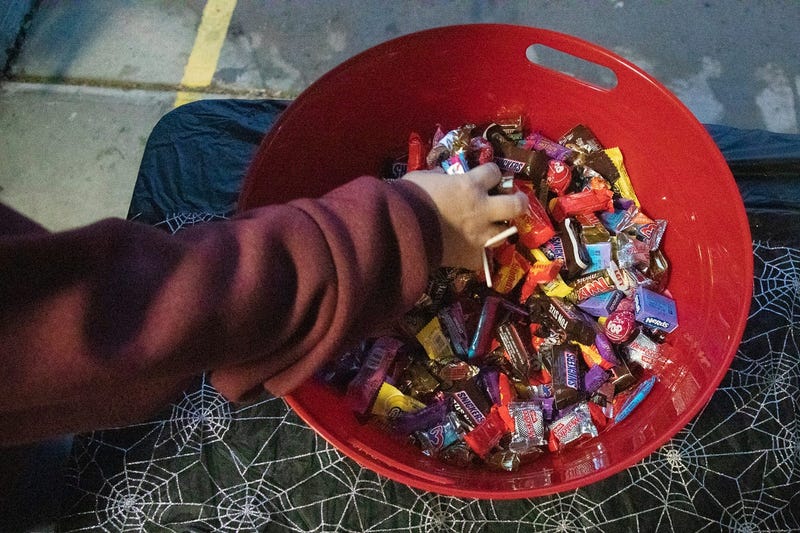
How much Halloween candy do you need to buy? Ideally, you want just the right amount so you don't have a ton left over on the day after Halloween that you'll feel like you have to eat, right? (Well, maybe a little . . . .)
The brainy engineering types at Popular Mechanics have come up with a formula to help you buy the right amount: it's the Candy Calculator.
You can check out the whole article here, but this is the short version (believe it or not.)
The formula is: T times K times G . . . plus D times F times S . . . divided by 75. Here's what all that means . . .
"T" stands for the amount of "time" in hours that you plan to hand out candy.
"K" is the estimated number of "kids" per hour you expect to show up.
"G" stands for "generosity factor" . . . or how many pieces you'll give each kid.
"D" is the number of "days" you'll have it in your house before Halloween. That's to factor in all the candy YOU'LL eat.
"F" is the number of "family" members in your home, because they'll eat some too.
"S" stands for "sneakiness level," or the number of pieces your family will eat each day. Then divide it all by 75, which is the average number of fun size candy bars in a bag.

Here's an example of what someone might need: Three hours . . . times 70 kids an hour . . . times three pieces of candy per kid . . . equals 630 pieces of candy. But as I'm writing this, we've got three days until Halloween night. So take three days . . . times, let's say four people in your household . . . times two pieces of candy per person a day . . . equals 24.
Add that to the first number, and you actually need 654 pieces of candy. Then divide it by 75, and you need about NINE bags of candy to get through Halloween. But if that's not enough, they added one more wrinkle. If there's rain in the forecast, divide the final number by 1.5, because you'll need about a third less candy.
Easy peasy! And who said math wasn't fun?
Thanks to the brainiacs at Popular Mechanics, and good luck to you.
